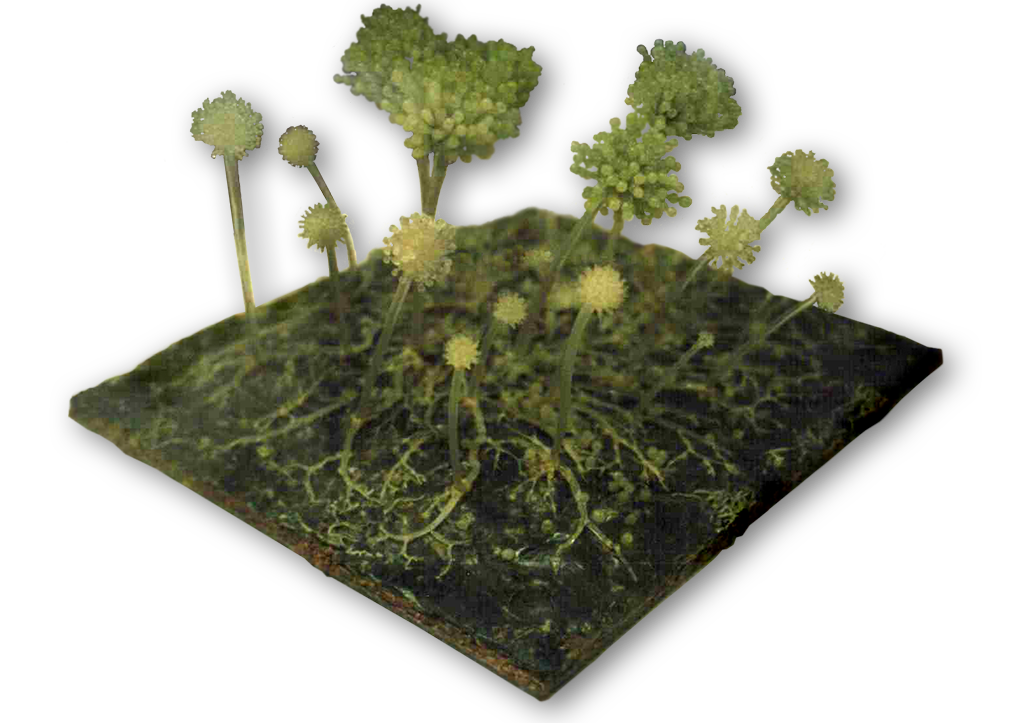Asexual vs. sexual reproduction
Most fungi have more than one means of reproducing themselves. The most elaborate method is typically sexual reproduction, which involves the mating of two strains (or often one strain with itself). Sexual reproduction produces recombinative spores called either ascospores, basidiospores of zygospores, according to the division to which the fungus in question belongs (the Ascomycota, Basidiomycota or Zygomycota, respectively). Many fungi may be reproduced more simply than this, however. It is often possible to take a fragment of a hypha or a bit of mycelium from a colony, place it on a nutrient medium and with a little time obtain a new fungus colony. This is usually the preferred method for reproducing fungi in the laboratory. A great number of fungi rely on this simple means of colony fragmentation for reproduction in their natural habitats. In fact, the success of asexual reproduction has driven the evolution of a wide variety of modified hyphae that simply break apart to facilitate dispersal. Asexual reproduction is so successful that some fungal species have simply ceased to undergo sexual reproduction. A similar trend is common in certain plant species which have lost the ability to flower and reproduce themselves by runners, tillers, rhizomes and various kinds of fragmentation. Since the classification of fungi (like plant classification) is based upon the form of the sexual reproductive structures, it has been difficult to integrate fungi which no longer exhibit sexuality into the traditional classification scheme. Thus, a special division called “Deuteromycota” was set up to accommodate these fungi. Unlike the other fungal divisions, the Deuteromycota is not organized according to relationship (shared ancestry), but rather it is based solely on form. As such is often termed a “form division”. Most of the fungi we commonly think of as “moulds” belong to this division, and are known only from their asexual forms (anamorphs). The true affiliation of these asexual fungi is often clear, however. In fact, the majority of moulds are known to be asexual states of members of the division Ascomycota.



